15 Amazing Benefits Of Quinoa For Skin, Hair, And Health
From boosting weight loss to managing diabetes – this pseudocereal does it all!
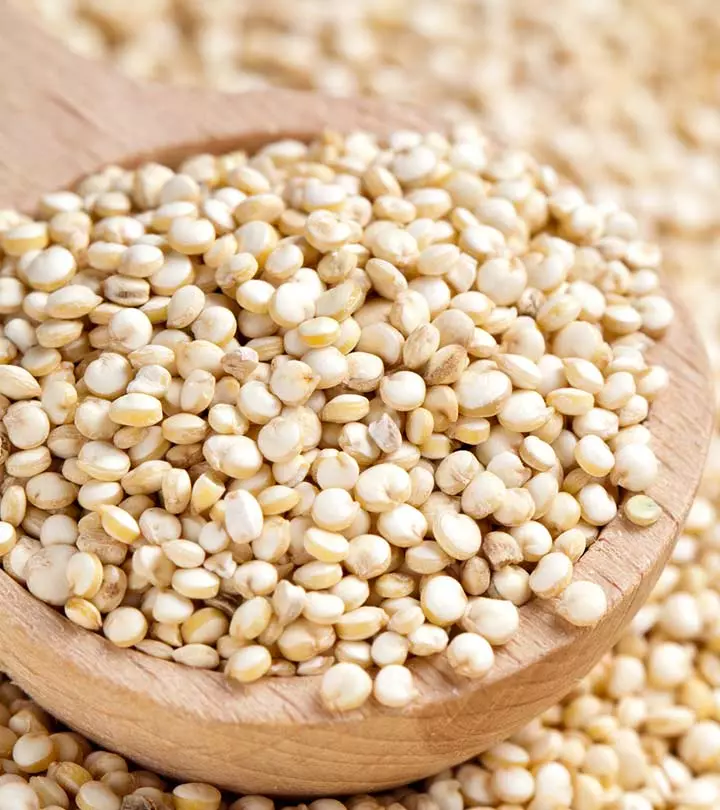
Image: i Stock
The many benefits of quinoa make it a healthy addition to your diet. It is gluten-free, nutrient-dense, and contains vitamins B and E, calcium, magnesium, potassium, and phosphorus. Quinoa’s high dietary fiber content makes it a wonderful food for weight loss and alleviating other digestive issues, such as constipation.
This article discusses quinoa’s health benefits, nutritional profile, recipes, and risks. Read on.
 Know Your Ingredient: Quinoa
Know Your Ingredient: QuinoaWhat Is It?
A small, flat, and round grain that comes in black, red, yellow, and white colors.
What Are Its Benefits?
It aids in digestion, promotes weight loss, and slows down signs of aging skin.
Who Can Consume It?
Anyone can consume it except people with IBS (irritable bowel syndrome), grain allergy, and kidney stones.
How Often?
You can eat 1 to 2 cups of cooked quinoa daily.
Caution
Overconsumption may cause bloating, gas, and intestinal damage.
In This Article
What Is Quinoa?
Whatever it is, let’s get the pronunciation right first. Keen-wah or ke-NO-ah. Yes, that’s how you pronounce it.
Quinoa, often called as “superfood” or a “supergrain,” is one of the world’s most popular health foods. If that’s a tad too generic, let’s get into the details. Quinoa (keen-wah, remember?) is a flowering plant that belongs to the amaranth family. It is an annual plant that is grown for its edible seeds. So, when we refer to the benefits of quinoa, we mean the benefits of its seeds. As the seeds are what we generally use.
The seeds are gluten-free. The composition of quinoa is similar to wheat or rice when cooked. And to answer the question: Does quinoa have protein? Well, yes, it is an excellent source of protein (a complete source, as it contains all the nine essential amino acids). It also contains a good amount of fiber and minerals.
And yes, there are different types of quinoa:
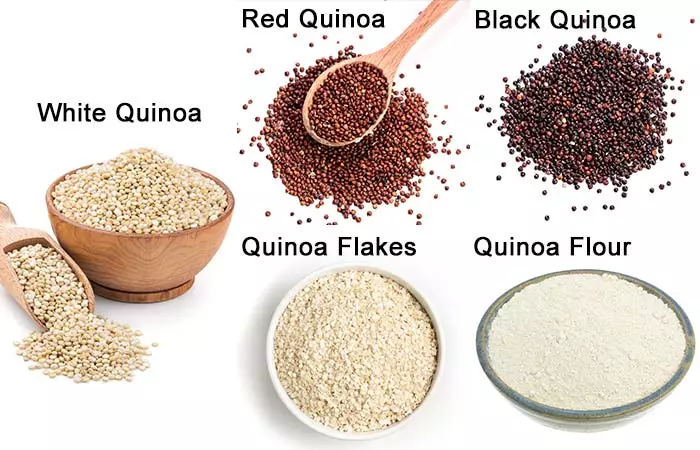
Quinoa or white quinoa, which is the most common type of quinoa available in stores. It is also called ivory quinoa.
Red quinoa, which retains its original shape (better than white quinoa) after a little cooking. This type is more suitable for cold salads or any recipe where a distinct grain is desirable.
Black quinoa, which is a little sweeter and earthier than white quinoa. This variety keeps its black color intact even when cooked.
Quinoa flakes, which are made by steam-rolling the whole grain kernels. These flakes make for a great quick breakfast.
Quinoa flour, which is nothing but the flour made of quinoa seeds. It looks pretty much like any other flour.
 Trivia
TriviaAlright. But what’s the big deal about it?
Key Takeaways
- Quinoa’s anti-inflammatory properties can aid in reducing skin irritation and puffiness.
- It can moisturize the skin and hair due to its high essential fatty acid content.
- The high protein content in quinoa may improve hair health.
- Due to a high fiber content, it may also promote digestive health and prevent constipation.
Is Quinoa Good For You?
Obviously. Otherwise, no point in knowing about it, right? The question here is not ‘Is quinoa healthy?’ but how good it can be for you.
The health benefits of quinoa are numerous. The seeds are rich in fiber, B vitamins, vitamin E, and other minerals like iron, magnesium, calcium, potassium, and phosphorus. They are highly nutritious. And they also contain quercetin and kaempferol, two important plant compounds, more of which we will discuss later.
Quinoa is gluten-free, which means it is party time for individuals who are intolerant to gluten. And it has a low glycemic index – and this means party time for diabetics too. Given it is high in iron and magnesium, quinoa can have wonderful effects on an individual’s metabolic health. The seeds brim with antioxidants (1).
There’s a lot more. Probably a million other reasons you will love quinoa. But in this post, we discuss a few very important of them. Oh yes, and before that, how about a li’l bit of history?
What Is The History Of Quinoa?
It all started about 4,000 years ago in the Andean region of Peru, Bolivia, and Chile – where humans had domesticated it for consumption. However, archaeological evidence says quinoa originated some 7,000 years ago.
Around the time of Spanish arrival, quinoa was well developed technologically and well distributed within the Inca territory (it was called the gold of the Incas), where it was believed to provide stamina to Inca warriors. And The Quinoa Corporation called it the supergrain of the future.
The plant has undergone numerous morphological changes over the course of human history – as a result of its domestication. Some of these changes include a compact flower head of the plant, an increase in the size of the stem and the seed, and high levels of pigmentation.
The nutrients in quinoa are the real deal as they alone are responsible for the rest of this post. So, here you go.
What Is The Nutritional Profile Of Quinoa?
Here are the quinoa nutrition facts. There are many surprising benefits of quinoa nutrition. Quinoa is packed with essential nutrients such as antioxidants, vitamins and minerals. It’s also considered a complete protein.
| Nutrition Facts Serving Size | ||
|---|---|---|
| Amount Per Serving | ||
| Calories 626 | Calories from Fat 93 | |
| % Daily Value* | ||
| Total Fat 10g | 16% | |
| Saturated Fat 1g | 6% | |
| Trans Fat | ||
| Cholesterol 0mg | 0% | |
| Sodium 9mg | 0% | |
| Total Carbohydrate 109g | 36% | |
| Dietary Fiber 12g | 48% | |
| Sugars | ||
| Protein 24g | ||
| Vitamin A | 0% | |
| Vitamin C | 0% | |
| Calcium | 8% | |
| Iroin | 43% | |
| Vitamins | ||
| Amounts Per Selected Serving | %DV | |
| Vitamin A | 23.8IU | 0% |
| Vitamin C | – | – |
| Vitamin D | – | – |
| Vitamin E (Alpha Tocopherol) | 4.1mg | 21% |
| Vitamin K | 0.0mcg | 0% |
| Thiamin | 0.6mg | 41% |
| Riboflavin | 0.5mg | 32% |
| Niacin | 2.6mg | 13% |
| Vitamin B6 | 0.8mg | 41% |
| Folate | 313mcg | 78% |
| Vitamin B12 | 0.0mcg | 0% |
| Pantothenic Acid | 1.3mg | 13% |
| Choline | 119mg | |
| Betaine | 1072mg | |
| Minerals | ||
| Amounts Per Selected Serving | %DV | |
| Calcium | 79.9mg | 8% |
| Iron | 7.8mg | 43% |
| Magnesium | 335mg | 84% |
| Phosphorus | 777mg | 78% |
| Potassium | 957mg | 27% |
| Sodium | 8.5mg | 0% |
| Zinc | 5.3mg | 35% |
| Copper | 1.0mg | 50% |
| Manganese | 3.5mg | 173% |
| Selenium | 14.4mcg | 21% |
| Fluoride | – | |
A cup of quinoa contains 222 calories. It contains just 4 grams of fat, 5 grams of fiber, and 8 grams of protein. In addition, it also has –
- 2 milligrams of manganese (58% DV)
- 118 milligrams of magnesium (30% DV)
- 281 milligrams of phosphorus (28% DV)
- 78 micrograms of folate (19% DV)
- 4 milligrams of copper (18% DV)
- 8 milligrams of iron (15% DV)
- 2 milligrams of thiamine (13% DV)
- 2 milligrams of zinc (13% DV)
- 2 milligrams of riboflavin (12% DV)
- 318 milligrams of potassium (9% DV)
- 2 milligrams of selenium (7% DV)
- 2 milligrams of vitamin E (6% DV)
Quinoa is a nutritious grain that offers essential nutrients, fiber, and antioxidants. It is a complete protein with all the essential amino acids like lysine, methionine, valine, threonine, isoleucine, leucine, phenylalanine, tryptophan, and histidine. These amino acids are crucial for building and repairing tissues, producing enzymes and hormones, and supporting various bodily functions. It is ideal for those with celiac disease or gluten intolerance as it is gluten-free.
The antioxidants in quinoa help protect the heart and other organs and potentially lower the risk of heart disease. The other health benefits of quinoa may include weight loss, reduced inflammation, and regulated blood sugar.
What Are The Benefits Of Quinoa?
You can count on quinoa benefits. Quinoa’s fiber content makes it a great food for weight management and treating other digestive issues like constipation. The fiber also promotes heart health and prevents deadly diseases like cancer. The antioxidants this food contains work magically for skin and hair health.
1. Promotes Weight Loss

All your gym workouts and well-disciplined diets are great, and adding quinoa can only make things better.
Quinoa is high in fiber. In fact, much higher than most grains and seeds. Though a major part of the fiber in quinoa is insoluble, it still does contain a decent amount of its solid cousin. One cup of the seeds contains 2.5 grams of soluble fiber – which, as per studies, aids weight loss (2).
There is something else in quinoa that warrants our attention. It is 20-hydroxyecdysone, a compound known to help with weight control. Research suggests that this compound helps burn more calories and consequently aids weight control (3). It also makes individuals absorb less fat from their diet.
2. Helps Prevent Osteoporosis
Let us bust a common myth – that only individuals above fifty years must be really concerned about bone health. In actuality (unless one happens to be a distant relative of a walrus), everyone must be concerned about the health of their bones. Irrespective of their age.
Given that quinoa is rich in magnesium, it works great for bone health. The mineral plays a role in bone formation. Quinoa is also rich in protein (1 cup contains 9 grams of it), a nutrient that serves as a building block for the bones (4). More importantly, it contains all the nine essential amino acids that the body cannot produce on its own, which have a part to play in this aspect.
As per other studies, the magnesium and manganese in quinoa also help prevent osteoporosis (5).
3. Protects The Heart
Home is where the heart is, and that’s where even quinoa is.
Getting to the point, the soluble fiber is what makes quinoa a wonder food for your heart. The soluble fiber combines with the bile acids in your liver and produces a jelly-like substance that’s excreted in your bowels. Your liver utilizes some of the cholesterol in your body to produce these bile acids. When the stores are depleted, your liver pulls cholesterol from your blood to produce these acids.
Are you beginning to get the idea here? Good. Simply put, quinoa somehow provokes your liver to extract cholesterol from the blood. That’s it.
Eating quinoa means lower levels of bad cholesterol, and this means a reduced risk of atherosclerosis and coronary heart disease. And this means you are going to live longer. Party time, again!
Quinoa contains fatty acids, 25 percent of which comes in the form of oleic acid. Now, oleic acid is your friend (6). It is a heart-healthy monounsaturated fatty acid, and 8 percent of it is ALA (alpha-linolenic acid), which is the omega-3 fatty acid predominantly found in plants.
4. Improves Skin Health
We already saw quinoa is rich in B vitamins, nutrients that help treat age spots and other conditions related to skin pigmentation by reducing the deposits of dark melanin in the skin. And the vitamin B12 in quinoa interacts with the other B vitamins to maintain a healthy skin complexion.
Quinoa also contains tyrosinase inhibitors, enzymes that decrease pigmentation and the associated problems (7). And the vitamin B3 in quinoa, also called niacinamide, helps treat acne. It soothes the red and inflamed areas often associated with acne breakouts.
Quinoa contains vitamin A, which is the mother of all vitamins when it comes to delaying the aging process. It reduces fine lines and makes your skin look young. And the riboflavin in quinoa (or vitamin B2) improves skin elasticity. It even treats acne – as it can help reduce sebum production.
Oh yes, didn’t we speak about quinoa brimming with antioxidants? Yes, these fight the free radicals that are almost always responsible for early aging. If you look into the mirror and suddenly feel you are looking like your aunt, you know who the culprit is.
By the way, you can use this face pack to delay your aging signs. Just cook ¼ cup of quinoa in soy milk and let it cool. Blend this boiled quinoa with 3 teaspoons of yogurt, 2 egg yolks, and 2 drops of mimosa essential oil. Apply it to your face and neck and leave it on for 20 minutes.
Rinse with lukewarm water. Your skin will become smooth and radiant.
Quinoa contains natural plant-based protein and anti-aging properties while soy milk nourishes and repairs the sun damaged skin by enhancing its elasticity. This face pack will also make the skin smooth and even toned.
5. Fights Inflammation
The fiber in quinoa produces butyrate, an important fatty acid that turns off genes related to inflammation. And the B vitamins in quinoa reduce homocysteine levels (an inflammatory hormone) in the body.
More interestingly, the digestion of fiber in quinoa (and fiber, in general) releases acetate – which then travels to the brain and signals us to stop eating. The logic is simple – if you eat less, you are less likely to be taking in pro-inflammatory foods.
Quinoa also contains compounds called saponins, which studies have shown to have anti-inflammatory properties (8).
6. Helps Fight Cancer
Let’s first stop thinking cancer is a killer. Because cancer is beatable. And preventable too. Thanks to quinoa.
Harvard University says a daily bowl of quinoa can save your life. Literally. A study shows that eating a bowl of quinoa daily can reduce the risk of premature death by cancer (9). And the American Institute for Cancer Research has a thing to say about its usage – each quinoa grain is coated with a bitter substance to protect it as the crop grows, so ensure you put it in a sieve and rinse before you even start cooking (10).
A Polish study also speaks about how quinoa can be a savior during cancer. It’s about the extracts of its leaves, though. These leaves exert chemopreventive and anticancer effects (11).
Another report by the Yale Cancer Center recommends adding quinoa to your diet to fight cancer (12). Quinoa is super rich in antioxidants – the very compounds that can fight free radicals and other harmful substances that cause cancer.
7. Helps Fight Diabetes And Hypertension

Quinoa is a whole grain, and whole grains are great for diabetes. The fiber in quinoa helps in blood sugar control. It also prevents diabetes-related weight gain and other chronic conditions.
A part of living with diabetes is all about taking foods that have low glycemic index, and quinoa, thankfully, is on the lower end. Quinoa also has all the amino acids to make protein (unlike most other grains), which also does a good job in controlling blood sugar levels.
One Brazilian study stated that a diet including quinoa could help manage type 2 diabetes and the hypertension associated with it (13). Quinoa is a complex carbohydrate – and such carbohydrates break down in the body much slowly, allowing the blood sugar to be more stable (14).
Quinoa also contains good amounts of magnesium and potassium, nutrients that help lower blood pressure. Magnesium also helps relax the blood vessels (and by the way, this helps combat migraines too).
8. Improves Metabolism
It’s common sense, if you ask us. When quinoa is replete with so many nutrients, it is impossible that your metabolism wouldn’t improve if you consume it regularly.
And its protein is something worth relooking at. It improves metabolism as well as significantly reduces appetite (15).
9. Aids In Anemia Treatment
Quinoa is rich in iron. One cup of cooked quinoa (185 grams) contains about 3 mg of iron, which is 15% of the daily requirement. A diet adequate in iron can help prevent anemia.
Another nutrient to look at in this aspect is riboflavin – which quinoa is rich in. Anemia can also be caused due to less riboflavin in one’s diet (16). Also, allow us to reiterate the importance of iron. The mineral is required to make hemoglobin, which is a part of the red blood cells that bind and carry oxygen in your blood.
10. Enhances Digestive Health
Quinoa is fiber-rich, and that makes this point self-explanatory. Pretty much. Fiber adds bulk to the food churned in your stomach, and this stimulates the walls of your digestive tract. Your tract contracts, and this promotes better absorption of nutrients in the small intestine. In the large intestine, this fiber prevents constipation.
The B vitamins in quinoa also play a role in digestion. One of these is thiamin, which helps in the production of hydrochloric acid (the acid in your stomach that aids digestion).
Riboflavin aids in the development of cells lined in the walls of the digestive tract. Another amino acid quinoa contains is glutamic acid, which is converted into glutamine in your body. Glutamine is responsible for the health of the mucosal lining of your stomach.
11. Promotes Longevity

There is a Bolivian man who is (or was) 123 years old. He credits his longevity to a daily diet that includes quinoa.
Enough said.
Numerous studies have shown that a diet rich in whole grains (like quinoa) can put a stop to numerous diseases, which obviously enables people to live longer.
12. Aids Tissue Repair And Growth
Quinoa is rich in lysine, which is important for tissue repair and growth. What’s interesting here is quinoa is the only grain that contains this amino acid (17). The high protein content also contributes to this factor.
13. Offers The Goodness Of Quercetin And Kaempferol
These two compounds are of particular importance. And quinoa is very rich in them (18).
Quercetin and kaemferol are known to fight inflammation. They also possess antiviral and antidepressant effects (19), (20).
14. Strengthens Hair Follicles
The protein content of quinoa is what we must look at here. Hydrolyzed protein extracted from quinoa acts as a natural and gentle coating that protects and nourishes the hair follicles from within. The protein extracted from this grain is also used to produce high-quality hair products.
The nine essential amino acids quinoa contains act as natural strengtheners and protect the hair shaft. They also repair damaged hair and promote hair growth.
The humectants in quinoa nourish and hydrate the scalp and keep it well conditioned. They form an invisible film over the hair to protect it from environmental conditions like pollution and dust.
And the vitamin E reduces breakage due to tangling by balancing the production of natural oils on the scalp.
15. Helps Treat Dandruff
Quinoa contains important minerals like calcium, iron, and phosphorus that seal moisture in the scalp to keep dandruff at bay. You just have to mash quinoa and apply the paste to your hair and scalp. Leave it on for 15 minutes and then rinse as usual.
The protein in quinoa also helps treat split ends. And the tyrosine in quinoa helps maintain the original color of your hair.
We have seen the quinoa benefits. But there is something else about quinoa we need to know. Some interesting facts.
Any Cool Facts About Quinoa?
- Though we cook and eat quinoa like most other grains (and we have called it a grain too, in this post), botanically speaking, quinoa is not a grain. It’s a relative of spinach, chard, and beets.
- There are more than 100 types of quinoa. The most commercialized of these are the white, red, and black varieties.
- Unlike brown rice (which cooks in about 30 minutes), quinoa cooks in just 15 minutes.
- Humans have been consuming quinoa for over 4,000 years now.
- 80% of the world’s quinoa is cultivated in Peru and Bolivia.
- About 20 years ago, NASA researchers declared quinoa to the perfect snack for astronauts on long-term missions as it is rich in minerals, gluten-free, and a complete protein.
 Did You Know?
Did You Know?These facts could have come across as a surprise. But nothing could be more surprising than not knowing how to select and store quinoa (especially after knowing its benefits).
How To Select And Store Quinoa
Quinoa seeds are usually sold in airtight packets or containers. The most common type of quinoa available is white, but black and tri-colored quinoa seeds are also available in some places.
Selection
- While purchasing quinoa, look for fine and dry grains. They should look and smell fresh.
- To ensure optimum freshness and shelf life, buy quinoa that is well packed and well-sealed.
- Whether you are purchasing quinoa in bulk or a packaged container, check to ascertain that there is no presence of moisture.
Storage
- Store grains in a cool and dry place in an airtight container with a tight-fitting lid. A properly sealed container is very important for maintaining freshness and reducing the possibility of infestation. This way, they will stay fresh for months or for over a year, if stored away from sunlight and heat.
- While purchasing quinoa seeds, do keep in mind that quinoa expands several times its original size. Hence, purchase in small quantities or as per requirement.
- You can also freeze quinoa as a long-term option. Cooked quinoa can be freezed in an airtight container.
- It is actually difficult to say if quinoa seeds are rotten. Since quinoa has a long shelf life, it does not become rancid or smelly with time.
- Cooked quinoa shows a loss of texture and acquires mold as it gets spoiled. Do not allow cooked quinoa to sit out at room temperature for more than 2 hours.
Well, there are other ways you can use quinoa in your cooking. Want to know?
Any Tips On Usage?
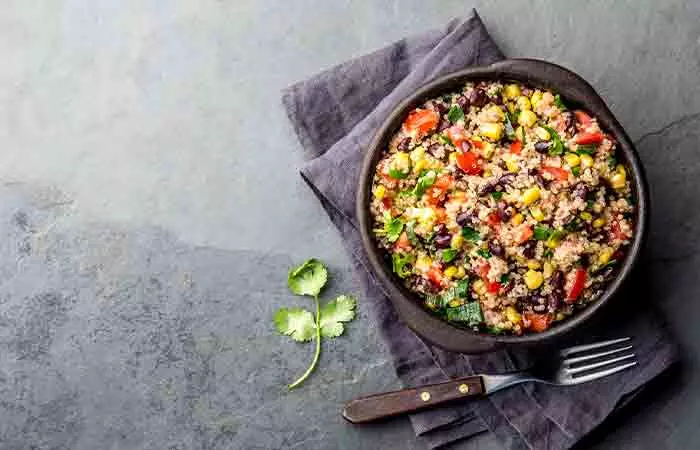
Quinoa uses are many; you can add quinoa protein in just about everything, from breakfast to dinner. Quinoa has a nutty and earthy flavor. It pairs best with savories like stews and curries. After cooking, it becomes quite fluffy and chewy and attains a very pleasant taste. The pearly white quinoas or light yellow quinoas are the fluffiest while the red and black ones are more compact.
Quinoa has a thick outer coat that must be removed before consuming. This covering protects the seeds from insects and birds. The outer coat has a bitter, soap-like taste, and, if consumed, can cause severe stomach pain, flatulence, and laxative diarrhea. So, prior to cooking, wash quinoa thoroughly and soak it for 2 hours. Then, change the water, soak again, and rinse it. Wash it repeatedly until the foam disappears completely. This process will remove the pesticide residue, saponins, and their bitterness.
Quinoa can be cooked in the same way as we cook other staple grains like buckwheat, rice, barley, etc. Its seeds are used to prepare porridge, soup, and stew and are ground to flour to prepare bread, alcohol, noodles, flakes, cookies, biscuits, pasta, cakes, buns, and even cold drinks in the Andean regions. You can mix quinoa flour with wheat, oats, and maize flour to enrich the protein quality of the meal. Quinoa is perfect for salad preparation as its grassy flavor and texture gel very well with lettuces and other leafy vegetables. You can add quinoa to your baked goods like muffins and pancakes to give them a distinct flavor.
To cook quinoa in the healthiest way, add one part of the grain to two parts of water and simmer for 20 minutes. The grains become translucent, with the white germ partially detaching itself. You can even roast quinoa before cooking to enhance its taste and give a crunchy texture. Place the seeds in a frying pan and roast on medium to low heat while stirring constantly for 5 minutes.
And in case you are wondering…
How To Incorporate Quinoa In Your Diet
Quinoa leaves and flower heads are eaten as vegetables and used to prepare curries, salads, and soups. But blanch the leaves and heads in boiling water before cooking as they contain oxalic acid, which can lead to kidney stones if consumed in large quantities.
Cold pressed quinoa oil is one of the most sought after oils used for cooking and dressing. It adds an amazing flavor and aroma to the dishes.
Since quinoa is completely gluten-free, it is a perfect food to include in a gluten-free diet. It also has very good digestibility, which decreases the risk of developing an adverse reaction to quinoa.
Quinoa can be a replacement to rice (both brown and white) as well. If we talk about brown rice, quinoa has more iron and magnesium than brown rice. The two have equal amounts of B vitamins. And with white rice, quinoa is a better choice any given day – just one cup of cooked quinoa has 40 fewer calories than the same amount of white rice. Also, white rice contains 15 times more carbs than quinoa, while quinoa is a great source of fiber and protein.
Elaine, a blogger, shares her preference for grain-based meals, saying, “My favourite grain is quinoa, I like the flavour and it provides a source of protein in my vegetarian diet, but I also like to try different grains for their flavour and nutrients (i).” She emphasizes her method of cooking quinoa to achieve perfectly cooked, separate grains with a nutty flavor, contradicting packet instructions.
You just saw what are quinoa benefits, how to include quinoa in your diet. How about checking out a few simple and easy ways on how to cook quinoa deliciously?
Any Popular Quinoa Recipes?
1. Kale And Quinoa Salad
What You Need
- 2 cups of water
- 1 cup of quinoa
- 10 leaves of kale, cut into small pieces
- 3 tablespoons of olive oil
- 2 tablespoons of lemon juice
- 1 teaspoon of Dijon mustard
- 1 large minced garlic clove
- 1 teaspoon of freshly cracked black pepper
- 1/2 teaspoon of ground sea salt
- 1 cup of pecans
- 1 cup of currants
- 3/4 cup of feta cheese
Directions
- In a saucepan, bring water to a boil. Stir the quinoa into the boiling water, reduce the heat to medium-low and place a cover over the saucepan. Cook until the quinoa absorbs water. Now, remove the saucepan from the heat and let it rest (covered) for 5 minutes. Remove the cover and allow the quinoa to cool completely.
- Add kale to a large mixing bowl.
- Whisk the olive oil, lemon juice, Dijon mustard, garlic, pepper, and salt in a bowl. Do it until the oil emulsifies into the mixture, and then drizzle it over kale.
- Add the cooled quinoa, pecans, currants, and feta cheese to the dressed kale. Toss well.
2. Vegan Quinoa And Black Beans Recipe
What You Need
- 1 teaspoon of vegetable oil
- 1 chopped onion
- 1 1/2 teaspoons of minced garlic
- 3/4 cup of uncooked quinoa
- 1 teaspoon of cumin
- 1 1/2 cups of vegetable broth
- 1/4 teaspoon of cayenne pepper
- 1 tablespoon of lime juice
- 1 cup of frozen corn
- 2 cans of black beans
- 1/2 cup of fresh chopped cilantro
- 1 ripe avocado, diced
- Salt and pepper to taste
Directions
- Firstly, rinse the quinoa in a strainer. This will get rid of the bitter taste on the outside of quinoa.
- Heat the vegetable oil in a saucepan over medium heat. Stir in the onion and garlic. Cook for a couple of minutes.
- Add the quinoa and vegetable broth to the pan. Now, add the cumin, cayenne pepper, salt, and pepper. Bring the mixture to a boil and then cover it. Reduce the heat and simmer for 20 minutes.
- Add the lime juice and frozen corn to the pan and stir well. Simmer for 5 minutes.
- Mix in the black beans and cilantro. You can garnish with the chopped avocado.
- You can serve the dish hot or cold. Store in the refrigerator.
We promise that these recipes are great for vegan diets and also in general, and will stay in your hearts for a long time. But for that, you need to first get quinoa, right?
Where To Buy Quinoa Sprouts?
You can find quinoa sprouts in health food stores, where they are often sold in bulk. You might also want to look for quinoa in any special gluten-free section of the supermarket.
Quinoa may aid in weight loss and improve one’s health. But is it healthier than millet? Find out in the next section.
Quinoa Vs. Millets
Quinoa is a pseudocereal packed with protein, potassium, and folate (21). Millets, on the other hand, are whole grains that are rich in choline, zinc, and phosphorus (22). Millets can be round, oval, or elongated, while quinoa is small and round. Quinoa has a nutty flavor, while millet is mildly sweet and chewy. Another key difference between the two is that quinoa has a longer shelf life due to its low oil content, while millets have a shorter shelf life due to their higher oil content.
Both millet and quinoa are excellent alternatives to rice and couscous. You can add either one or both to your diet as per your dietary preferences.
You saw every good thing about quinoa. But hey, the seeds have a few side effects too. And you need to know them as well.
What Are The Side Effects Of Quinoa?
Now we know about quinoa benefits but quinoa doesn’t have very serious side effects. However, you might have the following problems if you take it in excess.
- Digestive Issues
Since quinoa is rich in fiber, having it in excess can lead to gas, bloating, and diarrhea. This is especially true if you are not used to eating a lot of fiber.
Also, talk to your doctor before you take quinoa for its saponin content. Yes, we have spoken about the benefits of saponins – but certain sources say they might cause intestinal damage.
- Kidney Stones
Quinoa contains varying amounts of oxalic acid. While this acid is excreted in urine, it can also bind with calcium and form kidney stones in vulnerable individuals. In case you have a previous history of kidney stones, avoid its use and talk to your doctor first.
Are you curious about quinoa? Dive into this informative video, where you’ll learn everything you need to know about this nutritious grain, from its health benefits to cooking tips. Don’t miss it!
Infographic: 5 Ways Quinoa Can Improve Your Skin, Hair, And Health
Quinoa is a gluten-free superfood that has had a sweeping influence in the natural health sector. But did you know that quinoa also has significant advantages for your skin and hair? Yes, that’s correct. This infographic provides details of 5 amazing advantages of quinoa that can enhance the skin, hair, and overall health. Take a look! Illustration: StyleCraze Design Team
Quinoa is rich in many beneficial vitamins and minerals. Thanks to its high fiber content, quinoa promotes weight loss and enhances digestive health resulting in better athletic performances. It also promotes cardiovascular, brain health, and skin health. It even improves the immune system and metabolism and aids in the treatment of diabetes, anemia, and hypertension. You can include quinoa in your diet as a replacement for rice. However, overconsumption may trigger digestive issues and may increase the risk of kidney stones too. Hence, moderate consumption is advised. You can include quinoa in your diet by trying any of the above-mentioned healthy recipes.
Frequently Asked Questions
How much liquid do you need to cook quinoa?
A cup of quinoa requires about 2 cups of liquid.
Why does some quinoa have a bitter taste?
This natural bitterness comes from chemicals called saponins, about which we have discussed in this post. Saponins are found outside the seed and can be removed by rinsing the seeds vigorously in a mesh strainer. Certain brands of quinoa (like RiceSelect®) already sell prewashed quinoa, and you don’t have to rinse it again.
What is the shelf life of quinoa?
If stored properly, quinoa can last for up to 2 years. For longer shelf life, you can store it in the refrigerator or freezer.
Is quinoa good for babies?
Yes. It works great for their health. Just make sure your baby is at least 8 months old before he/she is introduced to quinoa.
How to make quinoa milk?
You just need a cup of cooked quinoa, 3 cups of water, 4 dates, and 1/4 teaspoon of cinnamon. Blend the quinoa with water, strain it using a cheesecloth, pour the milk in a blender, and blend with the dates and cinnamon.
Can you eat quinoa raw?
Yes, if it is first soaked and sprouted. But certain experts recommend eating it cooked as it is safer and much better.
What is the best time to eat quinoa?
Quinoa can be a part of your breakfast, lunch, or dinner. It is a good source of fiber and keeps you full for longer.
Is quinoa better than oats?
No, oats are considered better than quinoa as they contain more dietary fiber and magnesium, and protein (21), (23).
Illustration: Amazing Benefits Of Quinoa For Skin Hair And Health
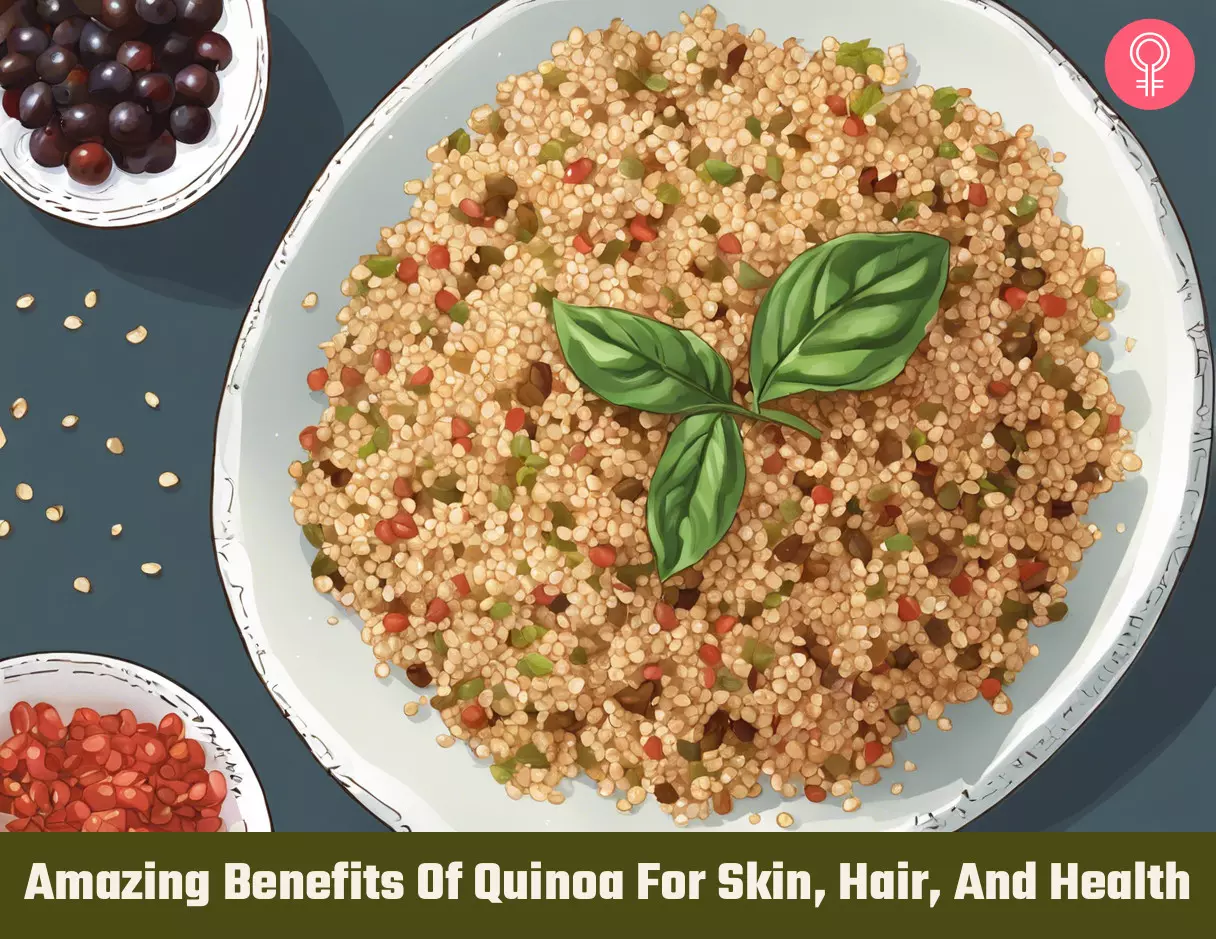
Image: Stable Diffusion/StyleCraze Design Team
Personal Experience: Source
StyleCraze's articles are interwoven with authentic personal narratives that provide depth and resonance to our content. Below are the sources of the personal accounts referenced in this article.
i. Cooking grains successfully every time..https://foodbod.wordpress.com/2015/08/26/cooking-grains-successfully-every-time/
References
Articles on StyleCraze are backed by verified information from peer-reviewed and academic research papers, reputed organizations, research institutions, and medical associations to ensure accuracy and relevance. Read our editorial policy to learn more.
- “Evaluation of indigenous grains from the…”. Universidade de Sao Paulo, Brazil.
- “Dietary fiber and energy regulation”. The Journal of Nutrition.
- “Quinoa extract enriched in 20-hydroxyecdysone…”. Institut Biophytis, France.
- “Tips for living it – protein-rich vegetarian foods”. Loma Linda University Health.
- “Short-term oral magnesium supplementation…”. Yeditepe University Hospital, Istanbul, Turkey.
- “Secrets of super grains”. University of Washington.
- “Quinoa skincare benefits”. Newsweek.
- “Anti-inflammatory activity of saponins from quinoa…”. Chinese Academy of Agricultural Sciences, Beijing, China.
- “Daily bowl of quinoa can save your life…”. The Telegraph.
- “Variations of Saponins, Minerals and Total Phenolic Compounds Due to Processing and Cooking of Quinoa (Chenopodium quinoa Willd.) Seeds” US National Library of Medicine.
- “Antioxidant and anticancer activities…”. University of Life Sciences, Lublin, Poland.
- “Using nutrition to fight cancer”. Yale Cancer Center.
- “Evaluation of indigenous grains from the…”. Universidade de Sao Paulo, Brazil.
- “Diabetes”. Aging Partners.
- “Protein intake and energy balance”. Maastricht University, The Netherlands.
- “Riboflavin”. National Institutes of Health.
- “Promoting fruit and veggie consumption…”. New Jersey Agricultural Experiment Station.
- “Total antioxidant capacity and content of flavonoids…”. Universidad Mayor de San Andres, Bolivia.
- “Quercetin transiently increases energy expenditure…”. Pennington Biomedical Research Center, Los Angeles, USA.
- “Anti-depressant natural flavonols…”. ScienceDirect.
- “Quinoa, cooked”US Department of Agriculture
- “Millet, cooked” US Department of Agriculture
- “Oats, whole grain, steel cut,”. US Department of Agriculture
Read full bio of Joel Kahn
Read full bio of Ravi Teja Tadimalla
Read full bio of Arshiya Syeda
Read full bio of Sindhu Koganti






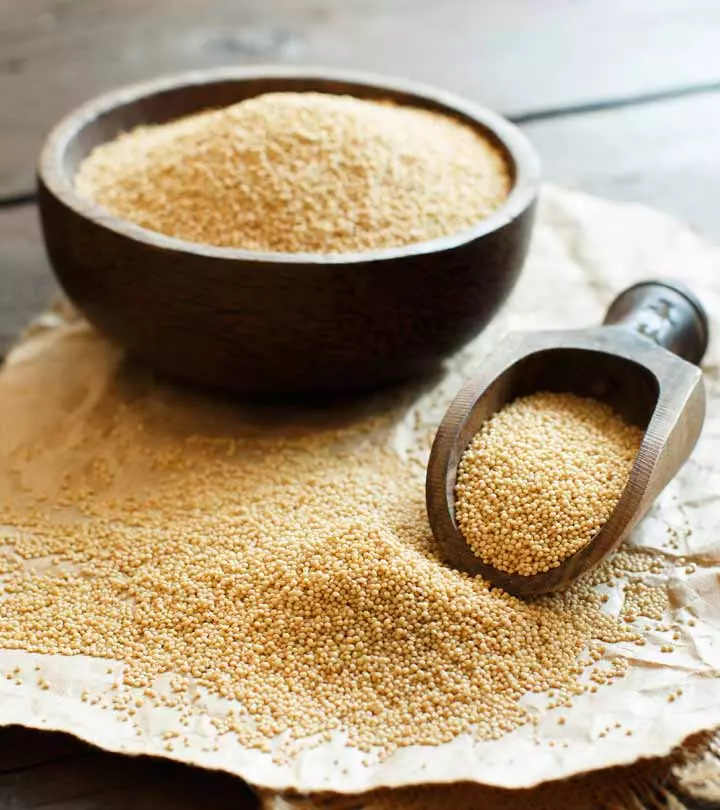
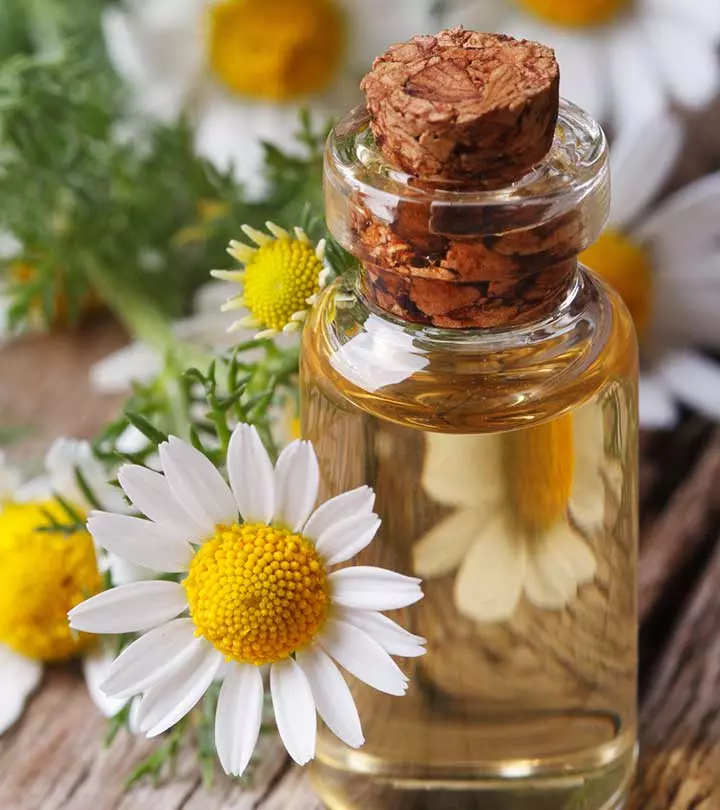
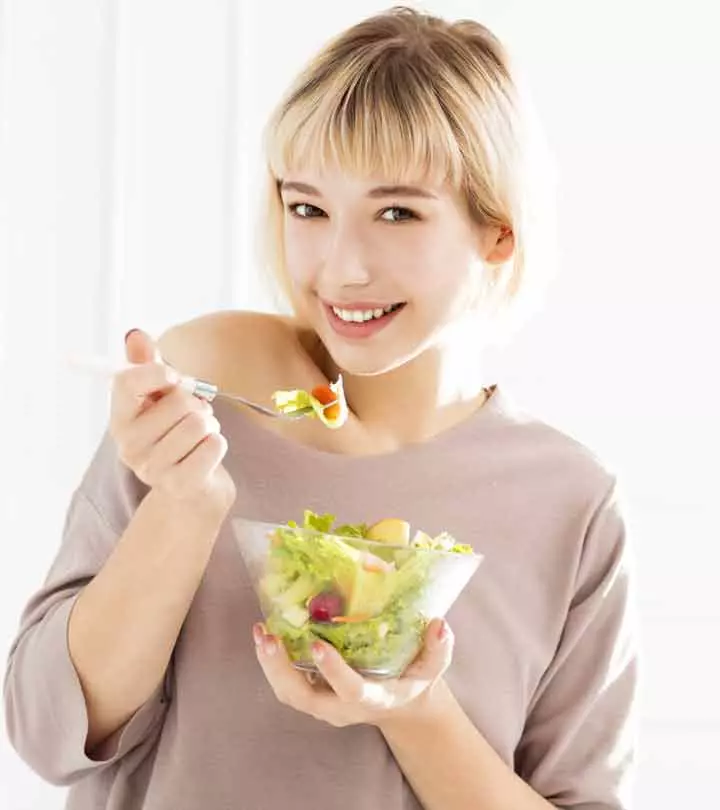
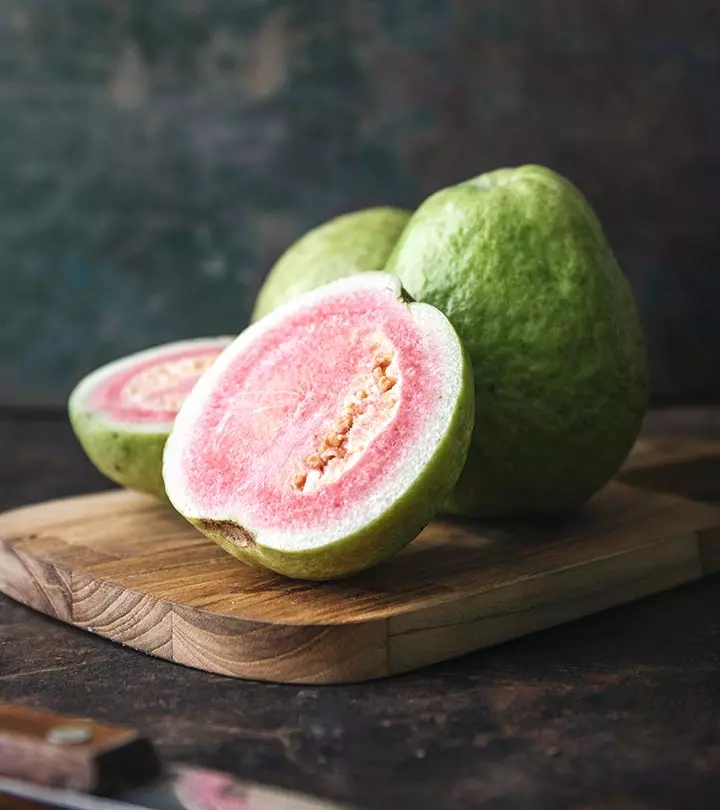

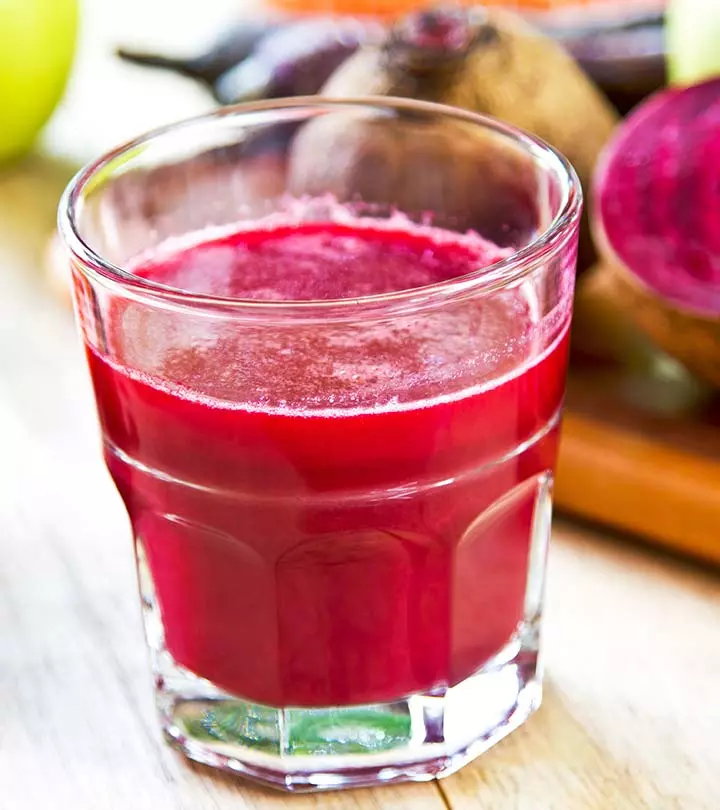
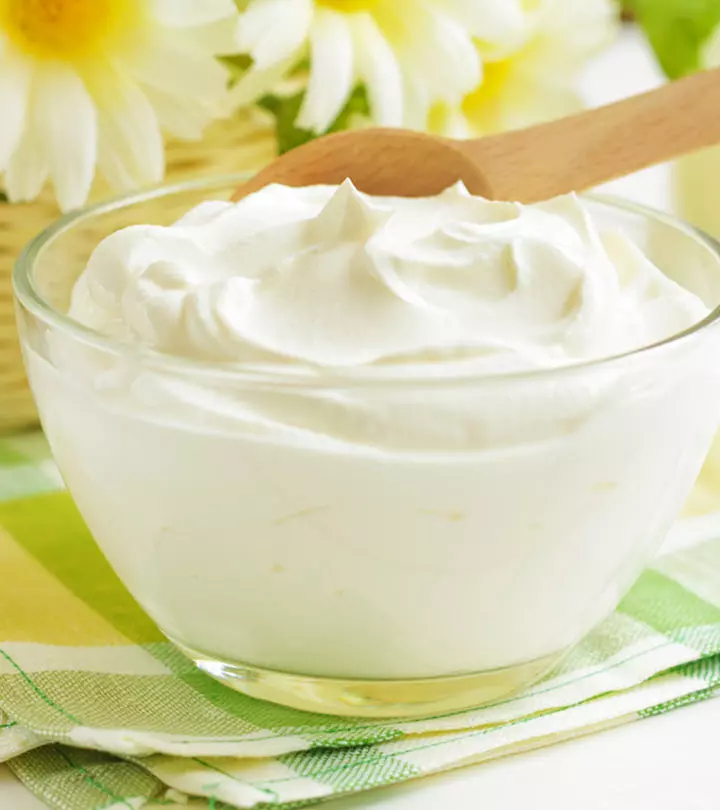
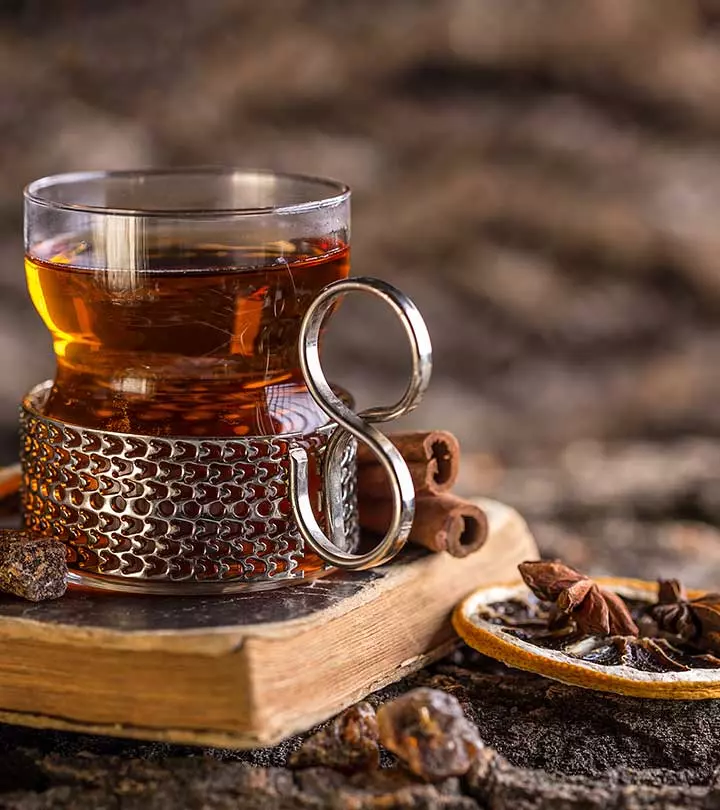


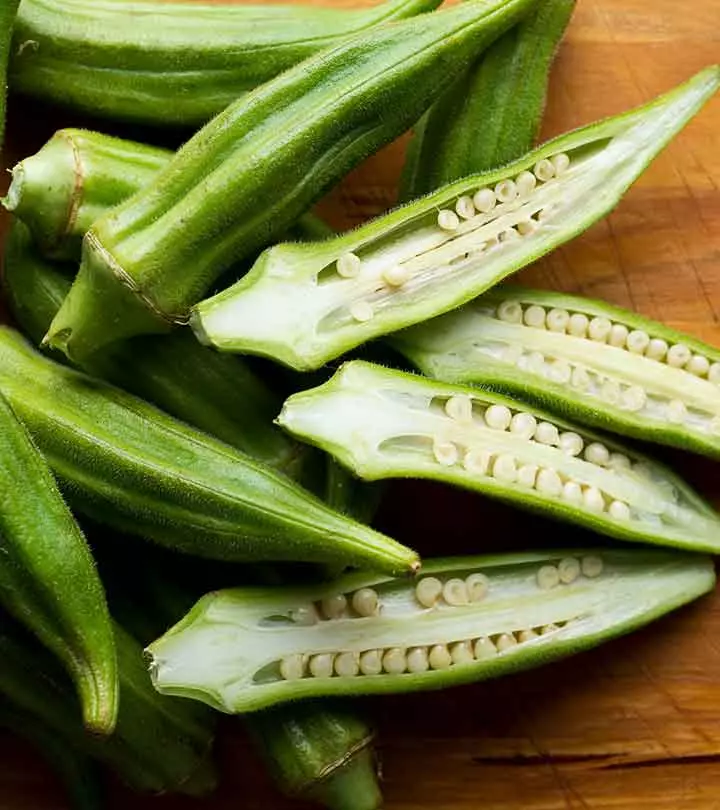
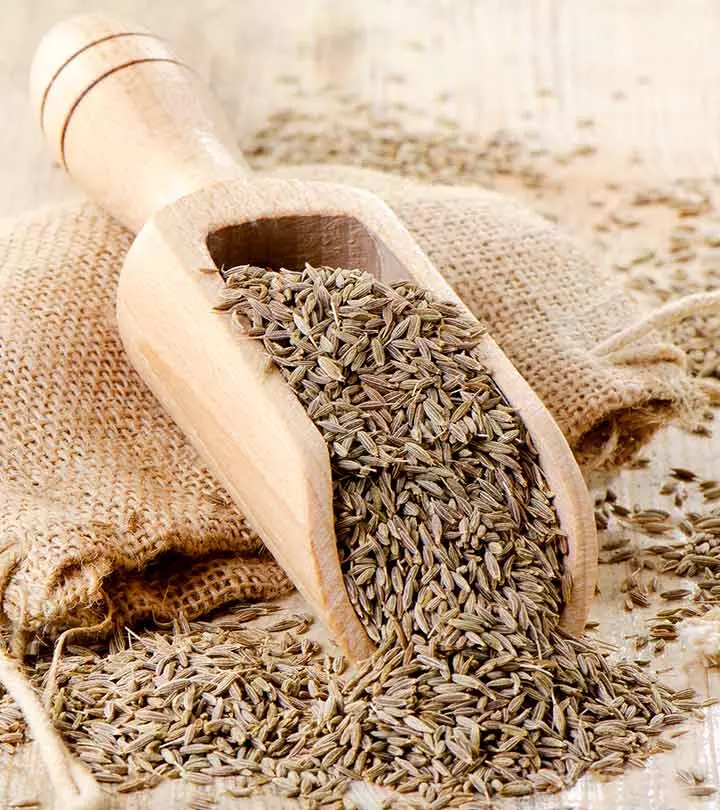
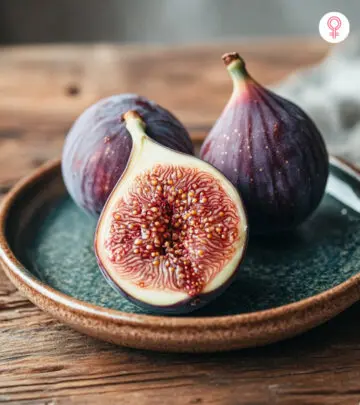


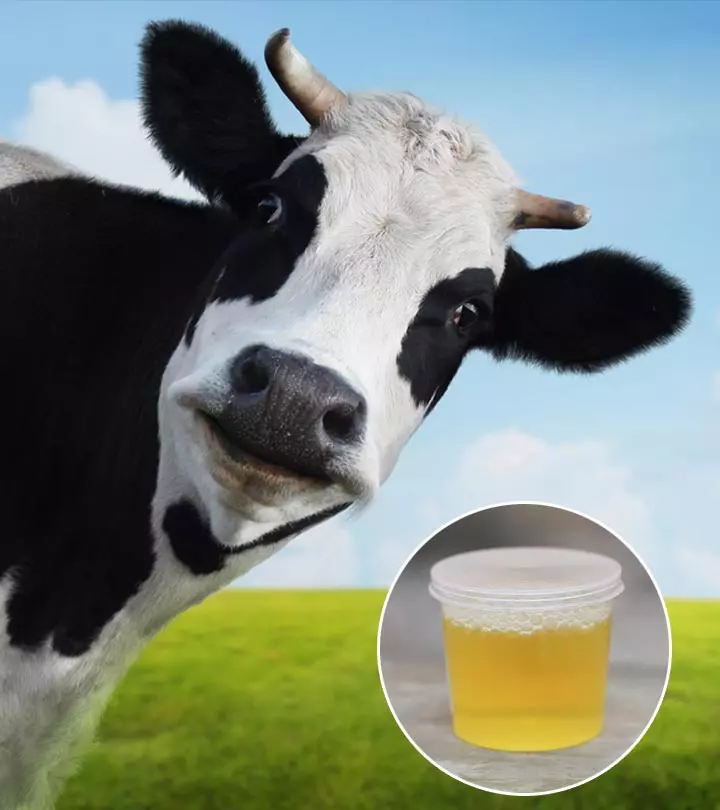
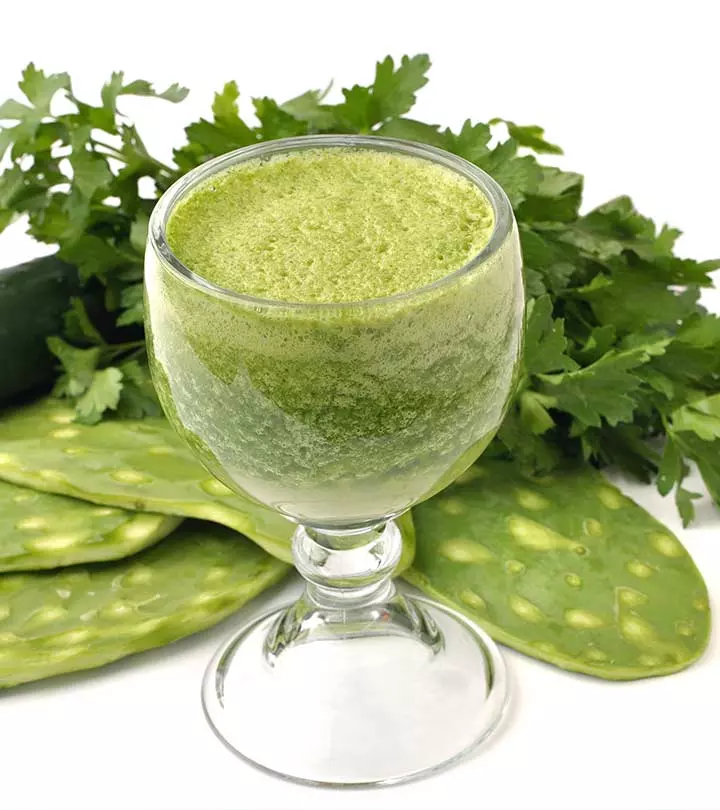
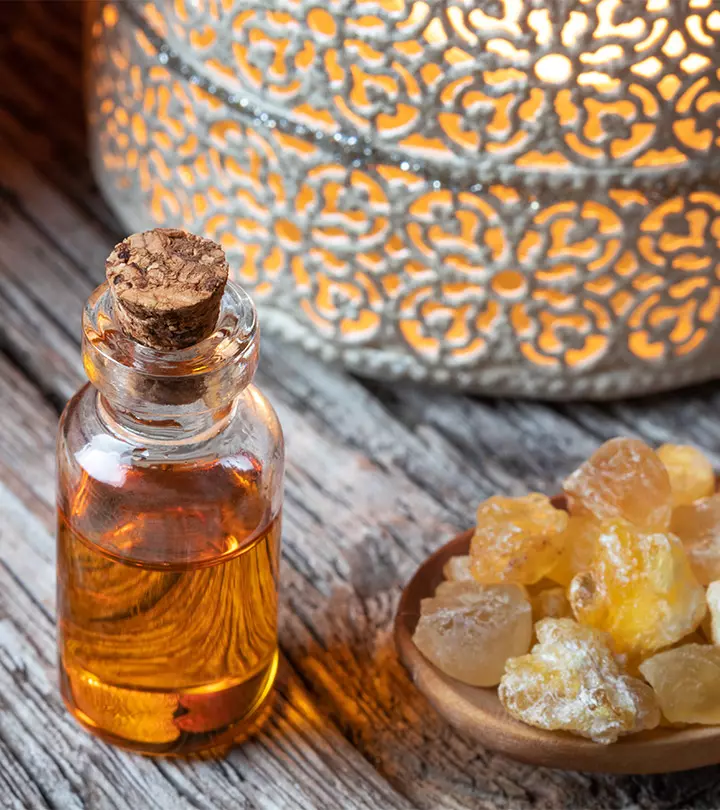
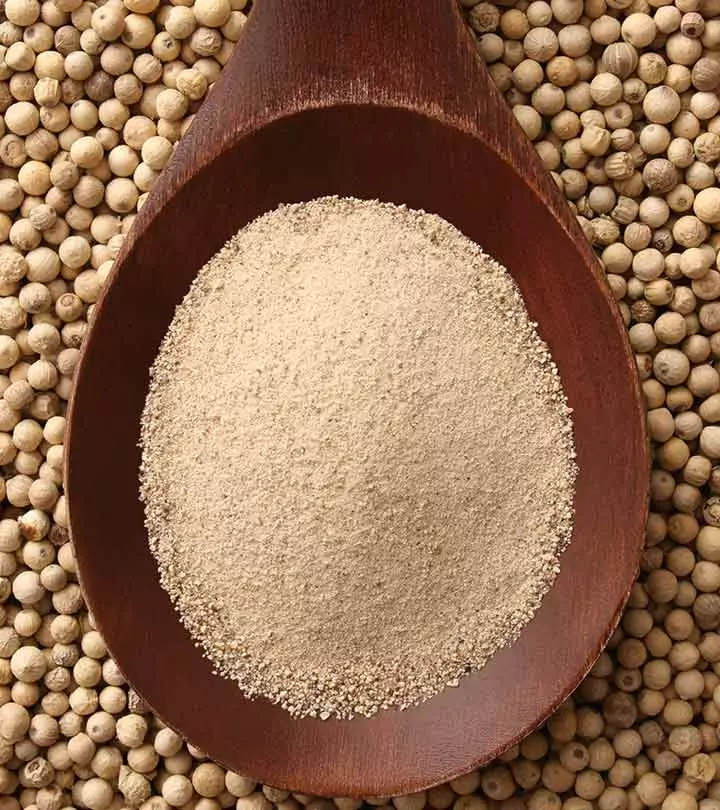
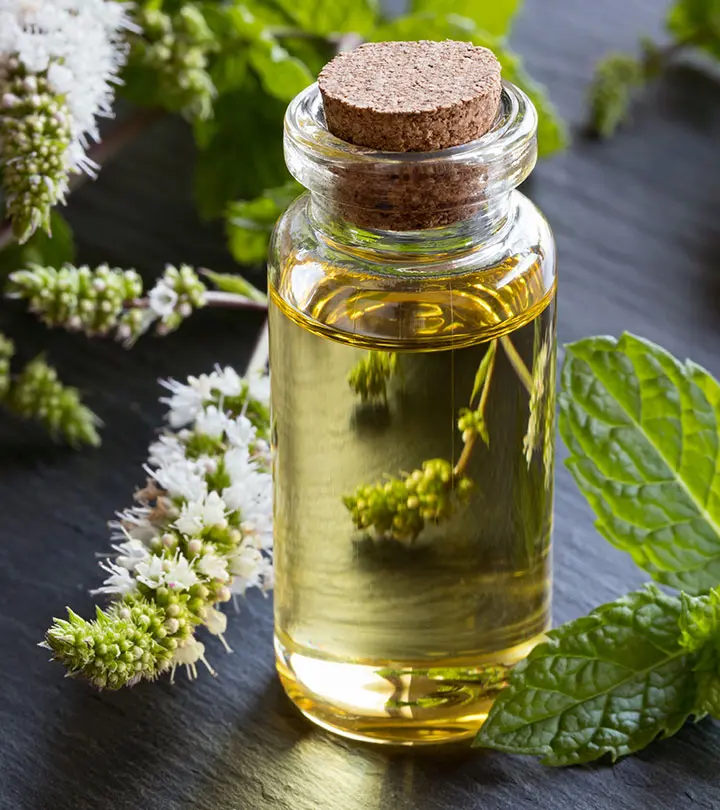

Community Experiences
Join the conversation and become a part of our empowering community! Share your stories, experiences, and insights to connect with other beauty, lifestyle, and health enthusiasts.